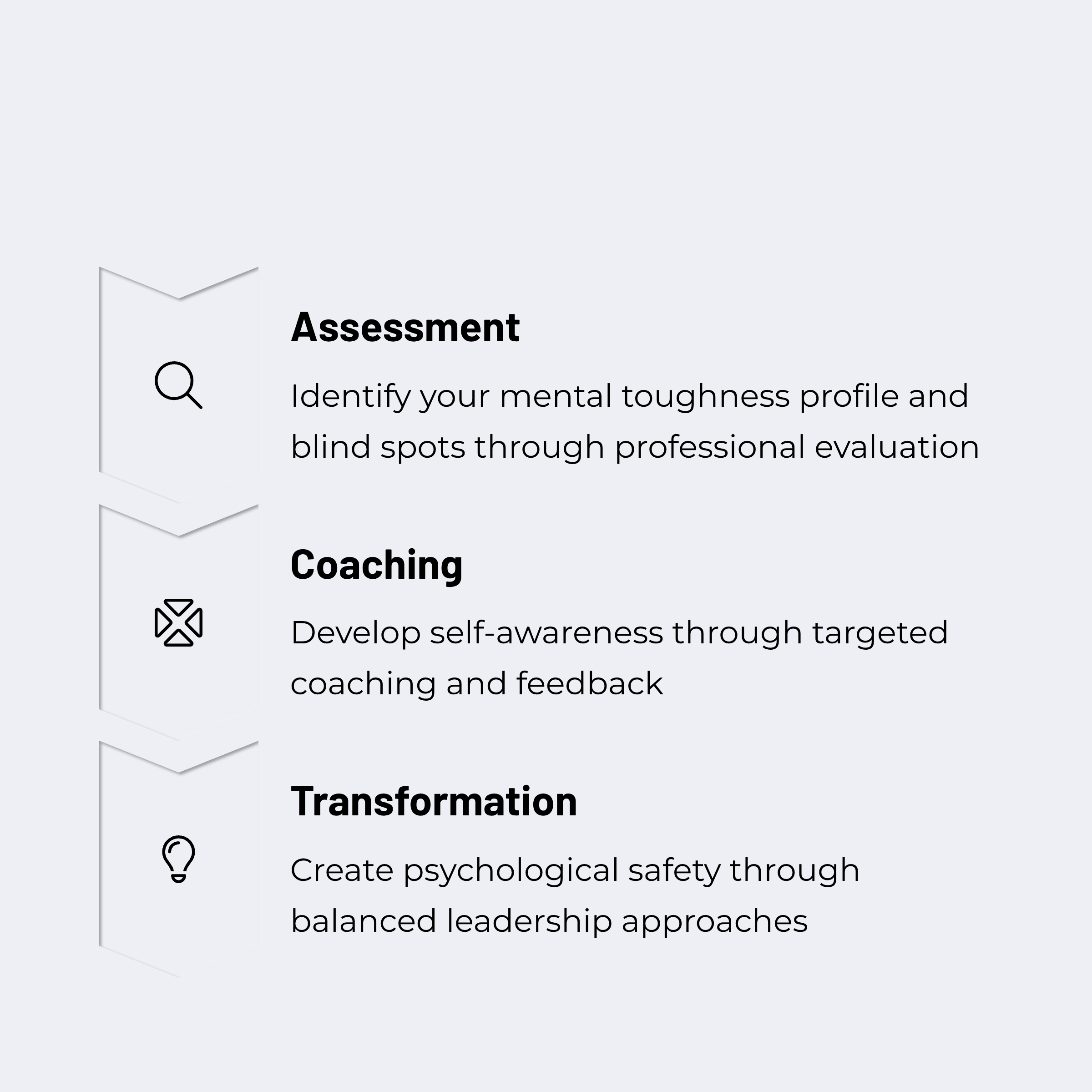Mental Toughness - The £288,000 Leadership Lesson
Introduction: A New Way to Think About Resilience
The conversation around workplace resilience has evolved significantly in recent years, but there's a concept that goes beyond traditional resilience training that could revolutionise how we approach workplace wellbeing: mental toughness.
In a recent conversation with Anthony Taylor, Co-founder of AQR Consulting, I discovered how mental toughness assessments are helping organisations move from reactive wellbeing approaches to proactive, data-driven strategies that prevent burnout before it happens.
A Data-Driven Discovery
"Mental toughness is a much broader, more proactive concept than resilience," explains Anthony. "Resilience tends to be about bouncing back from setbacks, whereas mental toughness is more about how you can thrive under pressure, taking on challenges and still staying committed to achieving outcomes."
This distinction is crucial for workplace applications. Some resilience training focuses just on recovery after difficulties, mental toughness development helps individuals and teams perform consistently under pressure, adapt to change, and respond rather than react to challenges.
Resilience
Focuses on recovery after difficulties
Reactive approach
Bouncing back from setbacks
Mental Toughness
Thriving under pressure
Proactive approach
Staying committed to outcomes
Adapting to change
The Four Cs Framework
Four Cs Framework
Developed through decades of research dating back to the 1980s, this evidence base provides organisations with a scientifically grounded approach to understanding how people think when exposed to stress, pressure, and opportunities.
When Mental Toughness Turns Toxic
One of the most compelling insights from our conversation was how high mental toughness without self-awareness can actually destroy workplace culture. Anthony shared a powerful case study of a director whose high mental toughness scores were creating a toxic environment.
"She was nine and tens on high levels of mental toughness, but without the self-awareness to understand how that meant she showed up at work," Anthony explained. "She was creating no psychological safety within the team because she was hard charging, had high levels of emotional control so people couldn't read her, and was setting a frenetic pace."
The result? Team members handed in their notice, performance plummeted, and the director was heading towards burnout. The calculated cost to the organisation was £288,000.
A Turnaround Story
Through mental toughness assessment and targeted coaching, the situation was completely transformed.
This case highlights how high mental toughness needs to be balanced with self-awareness, emotional intelligence, and the ability to foster psychological safety.
Three step process to transformation through self-awareness and emotional intelligence.
Why Data Beats Blanket Programmes
What makes mental toughness particularly valuable for workplace wellbeing is its data-driven approach. As Anthony notes, "Sheep dip approaches to wellbeing don't work."
Mental toughness assessment provides the insight to understand individual and team profiles, allowing organisations to tailor support effectively.
Rather than implementing blanket wellbeing programmes, organisations can:
Identify who might need support before problems arise
Determine the type of support that will be most effective
Blanket programmes
One-size-fits-all approach
Reactive to problems
Generic solutions
Limited effectiveness
Targeted, data-driven interventions
Personalised approach
Proactive prevention
Tailored solutions
Measurable outcomes
A Small Confidence Shift, A Big Outcome
Perhaps the most encouraging aspect of mental toughness development is that significant results don't require dramatic changes. Anthony shared the story of a client who moved from a score of 1 to 3 on confidence — a seemingly small improvement that enabled her to pitch a new role idea to her boss.
"That was enough for her to go and pitch the idea to the boss. He went 'That's genius.' It was signed off at corporate level, six roles were created, and a year later she's managing all six."
This demonstrates that mental toughness development isn't about completely transforming personality but about making targeted improvements that unlock potential and performance.
The Leadership Imperative
Leaders play a crucial role in mental toughness development, as they shape culture through their behaviour and responses to challenges.
Research shows that more senior people in organisations tend to be more mentally tough, but without self-awareness, this can create problems rather than solutions.
The key is helping leaders understand:
Their mental toughness profile
How it influences their leadership style
The psychological safety they create for others
How to Build Mental Toughness
Mental toughness development happens through small, consistent habits, not dramatic interventions. Techniques include:
Red to Blue thinking (used by the All Blacks to manage pressure)
All Blacks rugby team
Functional Imagery Training
Targeted coaching for emotional control or interpersonal confidence
Each person’s focus will be different. One may work on composure under stress, another on assertiveness. The strength of this approach is its personalisation.
Final Reflection
As organisations continue to grapple with workplace wellbeing challenges, mental toughness offers an evidence-based, data-driven approach that moves beyond reactive measures to proactive development.
It's not about creating superhuman employees. It's about helping people understand their psychological profile and develop the specific capabilities they need to thrive under pressure.
The result: improved individual wellbeing, stronger teams, better performance, and more resilient organisational cultures that can adapt and succeed in an increasingly complex business environment.
Want to explore how mental toughness profiling can support your organisation?



